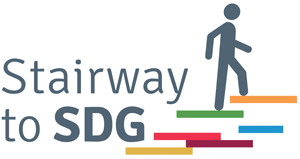Introduction

Everybody deserves equality (By @Wonderlane on unsplash.com)
|
Income inequality is one of the most used measurements to assess inequality across countries and worldwide. Not only its use helps us in keeping in track with the disparity between rich and poor people inside one country, but it helps us as well in checking how policies dedicated to shrinking this gap are doing over time. In sum, income inequality is a useful tool and it can be used to develop policies that can be efficient and effective both in minimizing the difference inside a country and between countries all over the world. This activity is provided through three different steps: in the first part, learners will devote their time to a discussion about equality and how to achieve it; in the second part, the activity offers an assessment process through a simple distribution game that can help learners to empathize with various categories of people (both rich and poor) and also to get a visual representation of inequality in distribution of wealth in a country; in the third and last part, the learners are asked to take contact with a local organization that deals with poor people or fragile categories that need governmental or non-governmental help to access their basic needs. This activity aims at educating the learners on the concepts of “equality” and “inequality” and attempts to provide a basic understanding of policies of redistribution of wealth and, more in general, how to minimize inequality in and between countries. |
Learning Objectives
- The learner understands local, national and global processes that both promote and hinder equality (fiscal, wage, and social protection policies, corporate activities, etc.)
- The learner is able to raise awareness about inequalities
- The learner becomes aware of inequalities in their surroundings as well as in the wider world and is able to recognize the problematic consequences
- The learner is able to maintain a vision of a just and equal world
- The learner is able to engage in the development of public policies and corporate activities that reduce inequalities
- Systems thinking competency
- Strategic competency
- Self-awareness competency
Instructions
|
Step 1) Brainstorming (30 minutes) The learners are asked to think about what they think equality means and how it can be achieved. Their thoughts are then shared to the rest of the class and the teacher moderates a discussion between the different answers and opinions. To close the debate, video 1 of “Useful Resources” can be used. Step 2) Assessment (210 minutes) The teacher divides the class in 5 groups, representing the population of a developing country in South-East Asia, and shows that on a desk it is displayed the total income of the country represented by 16 pieces of paper. The 5 groups form a line and the teacher starts to distribute the pieces of paper between the groups, starting on the one at their left: the first group on the left will receive 1, the second and third group will receive 2, the fourth group will receive three and the last group on the right will receive 8. The teacher explains that this unequal distribution represents the income inequality in the country. A discussion can be introduced asking, at this point:
Videos 3 and 4 can be used to guide the discussion. At this point, the class will be divided in groups (the same subdivision of the previous activity can be used). Each group is assigned a research topic by the teacher as follows:
The group research must be followed by a brief oral presentation so that the results are shared with everybody in a class discussion. - CALL TO ACTION 1 Students are asked to contact a local organization dealing with poor people or offering help to vulnerable categories of society and agree on four weekends of volunteering. The class can divide into groups to facilitate the process. - CALL TO ACTION 2 Then, or in parallel to the volunteering experience, students will contact local authorities (either in their city, or on a regional level or also at the national level if possible), in order to investigate the role of governments and of redistributive policies in the fight against inequality. |
Notes for Educators
Estimated Total Duration: 4 hours + Call to Action
Step 1: It is important that the teacher leaves room to all kinds of answers and thoughts in order to elaborate on all types of equality, such as in income, in social terms, in terms of gender, etc.
Step 2: The pieces of paper are meant to represent wealth so, in case the teacher has the possibility to use some other tool instead of paper, they can do that. For example they can use markers, crayons, marbles, any kind of coin/token).
The distribution game is based on the animation in video 2. The teacher can watch it to have a clearer idea on how to reproduce it with the earners.
Regarding the second section, the teacher should be always present to clear learners' doubts and help in any issues during the research. It is the teacher who assigns the research topics to the groups.
Call to Action: The teacher should provide a list of ONGs/organizations dedicated to the fight against inequality so that the students can choose or just choose the most adequate organization for the activity. The teacher should also arrange a visit or interview for the students with the authorities at the city Hall, for example, and take care of the logistics of it. The teacher can and has to help at any point of the activities where she or he feels that the students need support.










